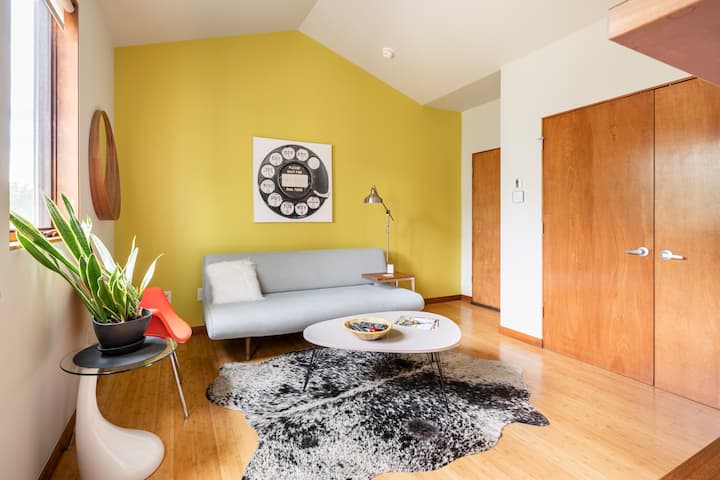15 min timer with music: Imagine effortlessly slipping into a state of focused productivity, the rhythmic pulse of carefully selected music guiding your work. This isn’t just about ticking off minutes; it’s about harnessing the power of sound to enhance concentration and unlock your full potential. We’ll explore the science behind music’s impact on focus, delve into the design of effective timer apps, and uncover the secrets to crafting the perfect sonic environment for peak performance.
Prepare to transform your workflow and discover the transformative effect of a perfectly timed musical experience.
From customizable playlists to seamlessly integrated productivity tools, we’ll dissect the features that make a 15-minute timer with music truly exceptional. We’ll examine different app types, discuss the ideal music genres for various tasks, and even explore the crucial role of user interface design in creating a smooth, intuitive experience. Get ready to discover how the right blend of time management and musical ambiance can revolutionize your productivity.
15-Minute Timers with Music: A Symphony of Productivity
Harnessing the power of music and focused time intervals can significantly boost productivity. A 15-minute timer with integrated music offers a potent tool for managing tasks effectively, improving concentration, and fostering a more enjoyable work environment. This exploration delves into the various facets of such timers, examining their features, design considerations, and potential integrations with other productivity tools.
Types of 15-Minute Timers with Music, 15 min timer with music
The market offers a diverse range of 15-minute timer apps, each with unique features and functionalities. These apps vary in their approach to music integration, offering either customizable options or pre-set playlists. The choice between online timers and downloaded apps also impacts the user experience.
- App Features: Many apps allow users to select music from their device’s library, adjust volume, and even create custom playlists tailored to specific tasks. Some advanced features include the ability to fade music in and out smoothly to avoid jarring transitions.
- Customizable vs. Pre-set Music: Apps offering customizable music options provide greater flexibility, allowing users to personalize their focus music. However, pre-set playlists curated by experts can be convenient for those who prefer a ready-made solution.
- Online vs. Downloaded Apps: Online timers offer accessibility from any device with an internet connection, but they may require a stable internet connection and could be susceptible to interruptions. Downloaded apps provide offline access, ensuring uninterrupted use, but require storage space on the device.
- User Interface Design: An intuitive user interface is paramount. Clear visual cues, simple navigation, and accessible controls contribute to a positive user experience. A clean and uncluttered design helps users remain focused on their task rather than navigating the app.
Music Selection and Its Impact on Focus: 15 Min Timer With Music
The genre and characteristics of music significantly influence focus and productivity. Calming ambient music can reduce stress and promote relaxation, while upbeat instrumental tracks can enhance energy and motivation. The selection of appropriate music is key to maximizing the benefits of a timed work session.
- Impact of Music Genres: Classical music, for example, has been shown to improve concentration in some studies, while pop music might be more distracting. Ambient soundscapes are often preferred for tasks requiring deep focus.
- Music Styles for Concentration and Relaxation: Instrumental music, particularly classical or ambient, is generally considered ideal for concentration. For relaxation, slower tempos and calming melodies are often preferred.
- Ideal Music Characteristics: Characteristics such as tempo, rhythm, and instrumentation can all impact focus. Generally, music with a moderate tempo and minimal lyrics is best for focused work.
| Music Type | Effect on Focus | Effect on Mood | Example |
|---|---|---|---|
| Ambient Music | Can enhance focus by masking distracting noises | Generally calming and relaxing | Brian Eno’s “Ambient 1: Music for Airports” |
| Instrumental Music (Classical) | Can improve concentration and cognitive function | Can be uplifting or calming, depending on the piece | Mozart’s “Eine Kleine Nachtmusik” |
| Vocal Music | Can be distracting, depending on the lyrics and tempo | Can evoke a wide range of emotions | (Note: Generally less suitable for focused work unless lyrics are minimal and calming) |
User Experience and App Design
A well-designed 15-minute timer app with music integration should be intuitive and user-friendly. Clear visual cues and accessible controls are essential for a seamless user experience. The app should provide smooth transitions between the timer and music controls.
You also will receive the benefits of visiting listcrawler oc ca today.
- User Interface Design: The app interface could feature a large, centrally located timer display with a clear progress bar. Music controls should be easily accessible, perhaps integrated directly into the timer display.
- Features and Functionalities: Essential features include a customizable timer duration, music selection options (library access, pre-set playlists), volume control, and options for pausing and resuming the timer.
- Using the Timer: The user experience should involve simple steps: selecting a music playlist, setting the timer duration, starting the timer, pausing if needed, and receiving visual and auditory cues indicating time remaining and completion.
- Visual and Auditory Feedback: The app should use visual cues like a changing color on the progress bar to indicate time remaining. Auditory cues, such as a gentle chime or a change in music tempo, can signal the approach of the timer’s end.
Integration with Other Tools and Platforms
Integrating a 15-minute timer with music into existing workflows can significantly enhance productivity. Integration with calendar applications or task management software allows for seamless scheduling and task completion.
- Integration with Productivity Apps: Imagine integrating the timer directly into a to-do list app, automatically starting a timer when a task is selected. This streamlines the workflow and eliminates the need to switch between multiple apps.
- Examples of Integrations: Integration with calendar apps could allow users to schedule focused work sessions directly within their calendar, with the timer launching automatically at the scheduled time. Integration with task management software could automatically track time spent on tasks.
- Benefits and Drawbacks: Seamless integration can lead to improved workflow and better task management. However, integrating with multiple platforms can introduce compatibility issues and increase complexity.
- Technical Challenges: Different platforms have varying APIs and data structures, creating challenges in ensuring seamless data exchange and functionality across different systems.
Accessibility and Inclusivity
Creating an accessible and inclusive timer app requires careful consideration of users with visual or auditory impairments. The design should accommodate diverse needs and ensure usability for all.
- Accessibility Issues: Users with visual impairments might require screen reader compatibility and alternative visual cues. Users with auditory impairments might need visual alerts and haptic feedback.
- Design Considerations: High contrast colors, adjustable font sizes, and clear visual cues are essential for visual accessibility. Alternative auditory cues, such as distinct sounds for different actions, and haptic feedback can enhance accessibility for users with auditory impairments.
- Strategies for Accessibility: Using clear and concise labels, providing alternative text for images, and offering multiple ways to interact with the app (keyboard navigation, voice control) are crucial steps.
- Accessibility Features: Features such as screen reader compatibility, adjustable font sizes, customizable color schemes, and haptic feedback significantly enhance the accessibility of the app.
Illustrative Examples

Let’s envision a 15-minute timer app interface. The visual design should be clean and uncluttered, emphasizing clarity and ease of use. The auditory cues should be unobtrusive yet effective in providing timely feedback.
- Visual Appearance: The app displays a large, circular timer with a vibrant progress bar that fills as time elapses. Clear buttons for “Start,” “Pause,” “Stop,” and “Music Selection” are prominently positioned. The selected music track is displayed beneath the timer.
- Sounds and Audio Cues: A soft chime signals the start of the timer. As the timer approaches completion, the chime becomes more frequent, and the music volume might subtly decrease. A distinct, pleasant sound indicates the timer’s completion.
Ultimately, the 15-minute timer with music isn’t just a tool; it’s a personalized productivity partner. By carefully considering music selection, app design, and integration with other tools, you can create a highly effective system for tackling tasks with renewed focus and energy. Embrace the synergy of sound and structure, and unlock the potential of a truly optimized workflow. It’s time to experience the difference a perfectly orchestrated 15 minutes can make.



